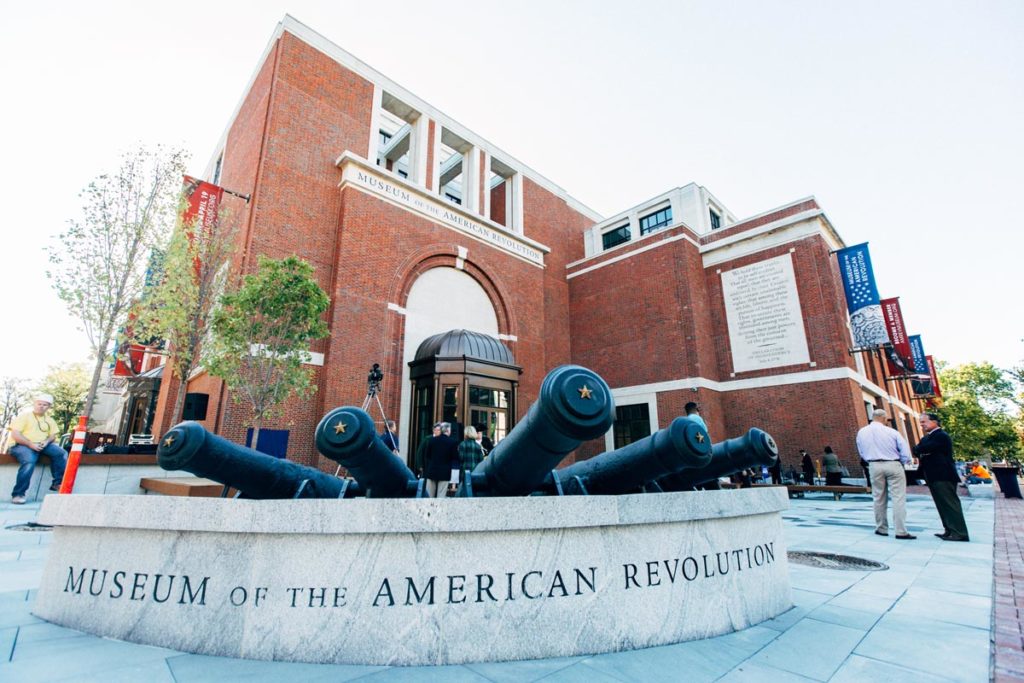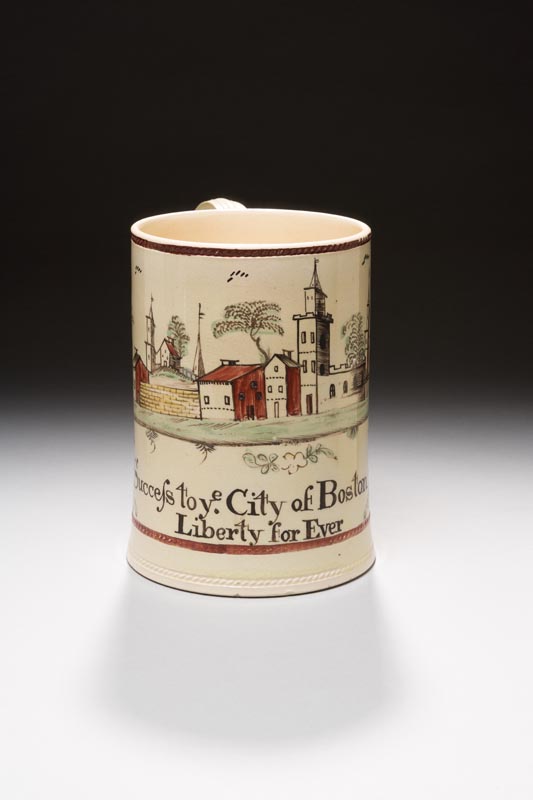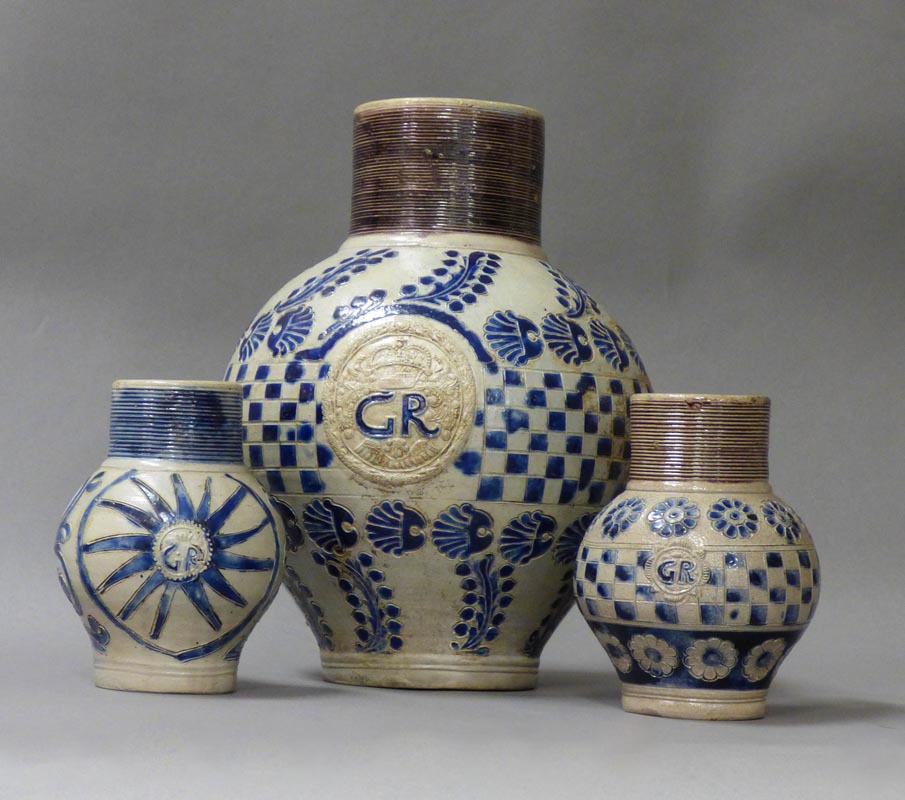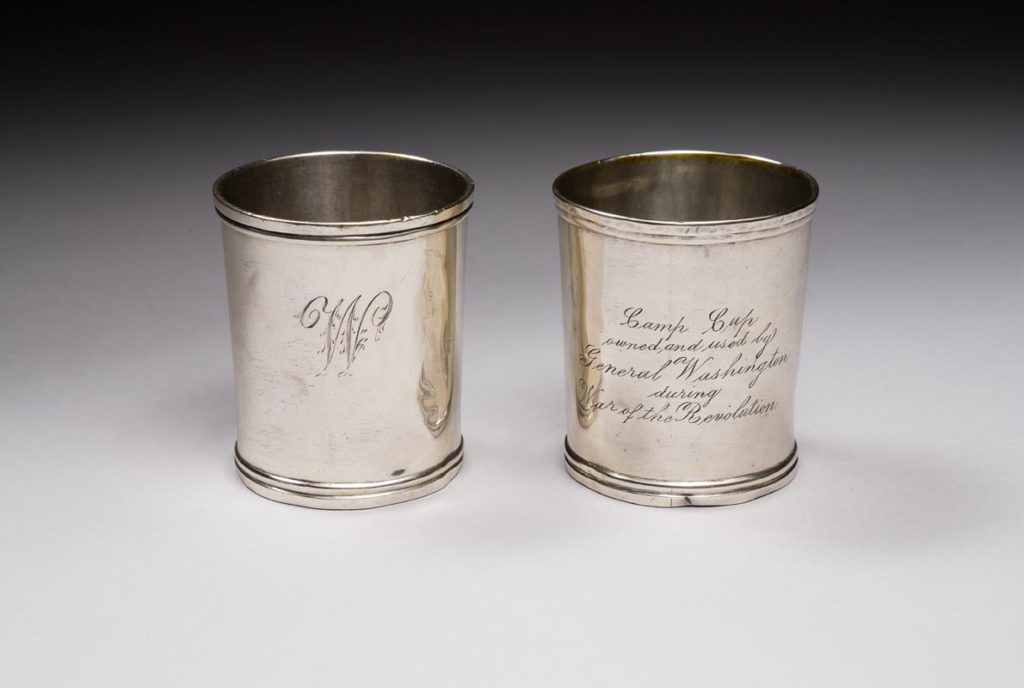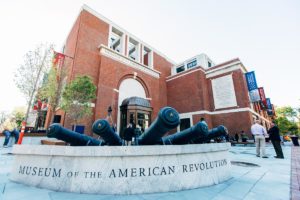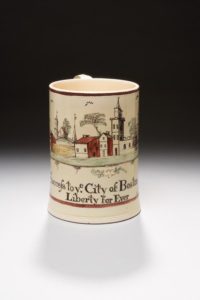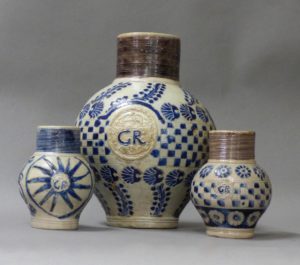The American Revolution Comes to Life in Philadelphia
By MATTHEW SKIC, Assistant Curator, Museum of the American Revolution
On April 19, 2017, the 242nd anniversary of the battles of Lexington and Concord, the new Museum of the American Revolution will open in Old City Philadelphia. The 118,000-square foot building, designed by Robert A.M. Stern Architects, will feature dynamic exhibits, touchscreen interactives, and immersive theaters that tell the dramatic story of the American Revolution.
Reverend W. Herbert Burk assembled the core of the museum’s permanent collection in the early 20th century. Inspired by the 1777–1778 winter encampment of the American Army, Burk founded the Valley Forge Museum of American History and the Washington Memorial Chapel, amassing a collection of objects to educate future generations. His centierpiece was General Washington’s military tent, which he purchased from Mary Custis Lee in 1909. Most of Burk’s collection, including the tent, was transferred in 2002 to the American Revolution Center, which was the Museum’s foundational organization. The tent itself will be on display in a special theater dedicated to Washington’s role as Commander in Chief of the Continental Army.
Arranged in chronological order from the 1760s to the 1790s, the Museum’s main exhibit demonstrates the meaning and symbolism of decorative arts and material culture from the period. About 400 objects will be on display, drawn from the museum’s collection and outside loans. The installation opens by illustrating how Americans initially expressed their pride in being part of the British Empire. Westerwald jugs decorated with “GR” cyphers for George Rex and a white salt-glazed stoneware teapot commemorating Admiral Edward Vernon speak to a cultural identification with England. Objects bore even greater political meaning as Americans resisted new British taxation and governmental policies. Visitors will view imported and domestically produced objects side-by-side to learn about non-importation boycotts, for instance, as well as see how portraits of George Washington and the “Chain of States” motif replaced images of George III and the royal coat of arms.
Through these objects, visitors will discover the stories of men and women, both famous and ordinary, who participated in the American Revolution. Ten of General Washington’s silver camp cups, made by Philadelphia silversmith Edmund Milne in 1777, will glisten in the main exhibit. The Museum will also display an easy chair and andirons owned by James Davenport, a veteran of the American Army. A family member recalled that Davenport would sit in his chair by the fire and share his memories of fighting Hessian soldiers during the Revolution.
As a period of dramatic change, the American Revolution does not have a single meaning or conclusion. Instead, the Museum will invite visitors to discover the diversity of the past and America’s material inheritance. Come to Philadelphia and see the Revolution for yourself!
SAVE THE DATE
- Spring Symposium New Orleans April, 2018
- Spring Study Trip Abroad Sweden & Denmark Late May-Early June 2018
- Fall Symposium Upper Hudson River Valley September 2018
- Fall Study Trip Abroad Vienna, Prague & Budapest October, 2018
By MATTHEW SKIC, Assistant Curator, Museum of the American Revolution
On April 19, 2017, the 242nd anniversary of the battles of Lexington and Concord, the new Museum of the American Revolution will open in Old City Philadelphia. The 118,000-square foot building, designed by Robert A.M. Stern Architects, will feature dynamic exhibits, touchscreen interactives, and immersive theaters that tell the dramatic story of the American Revolution.
Reverend W. Herbert Burk assembled the core of the museum’s permanent collection in the early 20th century. Inspired by the 1777–1778 winter encampment of the American Army, Burk founded the Valley Forge Museum of American History and the Washington Memorial Chapel, amassing a collection of objects to educate future generations. His centierpiece was General Washington’s military tent, which he purchased from Mary Custis Lee in 1909. Most of Burk’s collection, including the tent, was transferred in 2002 to the American Revolution Center, which was the Museum’s foundational organization. The tent itself will be on display in a special theater dedicated to Washington’s role as Commander in Chief of the Continental Army.
Arranged in chronological order from the 1760s to the 1790s, the Museum’s main exhibit demonstrates the meaning and symbolism of decorative arts and material culture from the period. About 400 objects will be on display, drawn from the museum’s collection and outside loans. The installation opens by illustrating how Americans initially expressed their pride in being part of the British Empire. Westerwald jugs decorated with “GR” cyphers for George Rex and a white salt-glazed stoneware teapot commemorating Admiral Edward Vernon speak to a cultural identification with England. Objects bore even greater political meaning as Americans resisted new British taxation and governmental policies. Visitors will view imported and domestically produced objects side-by-side to learn about non-importation boycotts, for instance, as well as see how portraits of George Washington and the “Chain of States” motif replaced images of George III and the royal coat of arms.
Through these objects, visitors will discover the stories of men and women, both famous and ordinary, who participated in the American Revolution. Ten of General Washington’s silver camp cups, made by Philadelphia silversmith Edmund Milne in 1777, will glisten in the main exhibit. The Museum will also display an easy chair and andirons owned by James Davenport, a veteran of the American Army. A family member recalled that Davenport would sit in his chair by the fire and share his memories of fighting Hessian soldiers during the Revolution.
As a period of dramatic change, the American Revolution does not have a single meaning or conclusion. Instead, the Museum will invite visitors to discover the diversity of the past and America’s material inheritance. Come to Philadelphia and see the Revolution for yourself!

